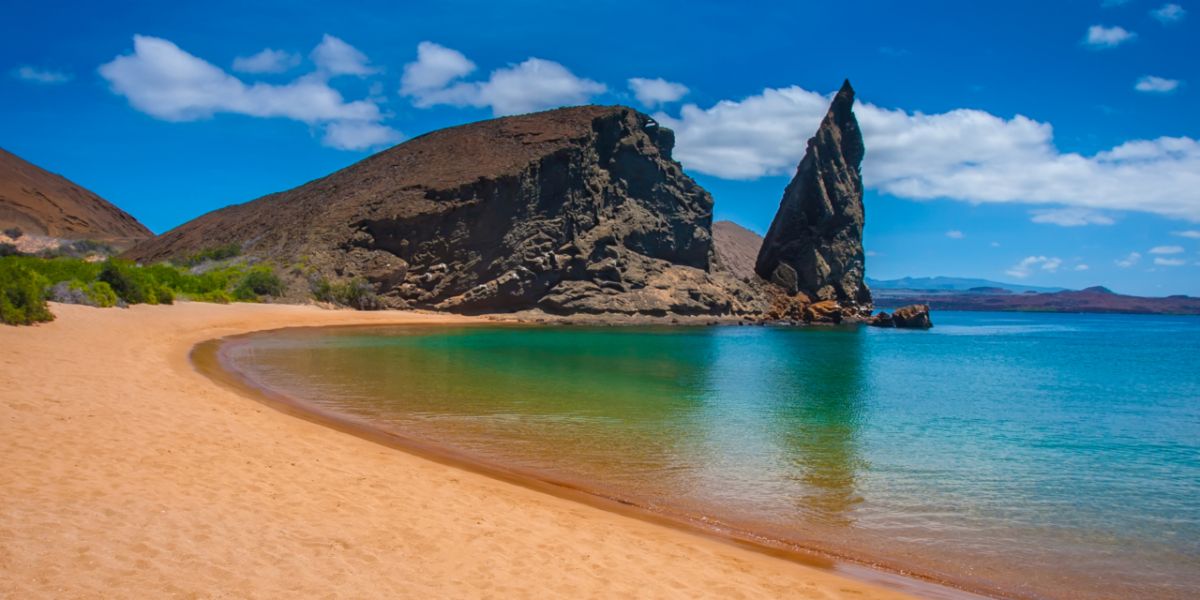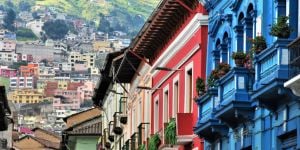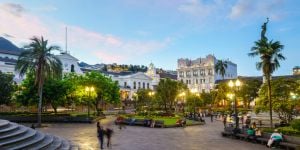
Visiting Ecuador’s coast offers a whole host of exciting adventures, from whale watching to parasailing to just walking along on the beach. But where should this adventure begin? And where should you stay?
Ecuador's Pacific coastline extends from Esmeraldas in the northwest, near the Colombian border down south to Bahía, Manta, Puerto Lopez, Montañita, and then to Salinas. Near Salinas is South America's western-most point, at 'La Chocolatera', named for its churning brown surf as the waters of the Pacific cascade over the volcanic rocks. Here the coastline turns east towards Playas, Guayaquil, and then further east to Machala, the closest large city to the Peruvian border. For lots of fun in the sun and surf, most vacation travellers stick to the areas between Salinas and Manta, as the weather is temperate, balmy, and the waters usually calm and warm.
Beach Towns
Since the construction about ten years ago of the Ruta del Sol, the main road from Salinas north to Manta, beach tourism along the coast has skyrocketed. Small fishing villages have exploded in size, high rise hotels have been built, and numerous travel agencies compete for the tourist dollar. In the past, during nice weather holidays, Guayaquileños always travelled to Playas (about an hour from Guayaquil), and occasionally to Salinas, and Quiteños travelled to Bahía or Esmeraldas to enjoy the balmy beach weather. Today, condos and homes for sale or rent can be found all along the coast from just outside Guayaquil on the Ruta de la Costa to Salinas, then all the way up north on the Ruta del Sol past Manta and Bahía.
On the water
Along the coastal region, whale watching is the one of the most popular activities for tourists, both Ecuadorian and foreign. Whales come to the protected waters along the coastal towns to give birth and fatten themselves up from June to September. Boats can be hired from Salinas, Manta, or Puerto Lopez to take you out to view the whales for $10-$20. Boat guides will tell you that it's been over 50 years since a shark was spotted along the coast, so the whales know that their babies will be safe. Boat drivers and guides are in constant contact with other boats in order to find and follow the whales. Once a boat is in range of a whale, they must keep their engines idling as the animals are protected by law. It's not uncommon to see a mother whale with a curious baby whale trying to get closer to see the humans.
Montañita & Salinas
If you are hoping for wetter adventures than whale watching from a boat, go to Montañita or a short distance away to Olon for surfing or parasailing, or enjoy the beach in Salinas. Montañita is known as the surfer's town and offers numerous Spanish schools as well as coffee shops, beer gardens, and great restaurants. In Salinas, you can go parasailing, rent a wave-runner or a paddle boat, ride on a banana boat (and get thrown in the water at the end), or even rent a sailboat for a leisurely sail off the coast. Olon is a quieter town, with good rental properties and restaurants. Salinas is known for its fresh seafood and you won't be sorry if you order the coconut shrimp or fresh fried fish at any of the seafood restaurants along the Malecon or Boardwalk. Both Montañita and Salinas boast delicious sushi restaurants because the chefs can always obtain really fresh seafood and vegetables every day.
Puerto Lopez
Puerto Lopez, a small fishing town, is the gateway to both whale watching boats and tours to either the Machalilla protected reserve or to Isla de la Plata. The Machalilla Reserve is a gorgeous rainforest nestled along a protected pristine beach area that is a must-see destination on the coast. Isla de la Plata is called the 'Poor Man's Galapagos' as it is an island similar to the Galapagos only about an hour's boat ride off the coast. Here you can hike to the top of the uninhabited island with a guide to see iguanas, frigate birds, and blue-footed boobies. Guides will explain the flora and fauna at both places, as well as the history of the region.
Manta
Manta is the site for a qualifying Half-Triathlon every July, and the town and beach area are packed with revellers, food, and music all night long the evening after the race. Make your lodging reservations way in advance as the town will be full that weekend! The city of Manta recently built a new shopping mall just across the street from the beach area where the race starts and finishes, and the mall offers many options for shoppers and hungry travellers. If you can't find a reasonably priced rental in Manta, travel about 20 minutes north of Manta to Crucita where you will find lots of beachfront rentals, at more affordable prices compared to Manta.
Bahía
Farther up the coast from Manta is Bahía de Caraquez. Even though Bahía boasts a lovely beach and warm ocean waters in a bay, the town and its residents suffered tremendously during the devastating earthquake in April 2016. While the town has for the most part been cleaned up and rebuilt, unfortunately, Bahía has experienced a dearth of tourism due to fears of a recurring earthquake, and many business owners have not returned or re-opened up their restaurants or hotels. Nevertheless, bargains can be found easily in both lodging and dining in Bahía.
Where to stay?
Beachfront properties, of course, will cost you more to rent or buy than a place a block or more away from the beach. Rentals in Salinas can range from $20 a night for a basic room set back from the beach to $350 a night for a luxurious 3 or 4 bedroom condo right on the Malecon. Farther up the beach, in Puerto Lopez, nice hotels with good en-suite bathrooms will run you $40 to $80 a night. In Manta, hotels range from $50 to $300 a night, depending on the location, type of rental, and the date. You will pay much more during a holiday weekend in Manta or during the Triathlon at a hotel than during the middle of the week at a hostel, where a decent place to stay can be had for around $30-$40. In Montañita, very basic rooms can be found for as little as $10 a night, but don't expect an en-suite bath!
Many Ecuadorians and expats own beach homes and condominiums all along the coastal areas and will advertise and rent them out when they are not using the homes themselves. Particularly if you are a group of four or more, these types of rentals can be much less expensive, and more comfortable than a hotel or a hostel. See below for a listing of possible rental websites.
Useful links:
VRBO
Airbnb
Homeaway
Trip Advisor
Bedroom Villas
Booking.com
Ecuador Travel
Lonely Planet
South American Tourism
Explore Ecuador
We do our best to provide accurate and up to date information. However, if you have noticed any inaccuracies in this article, please let us know in the comments section below.








